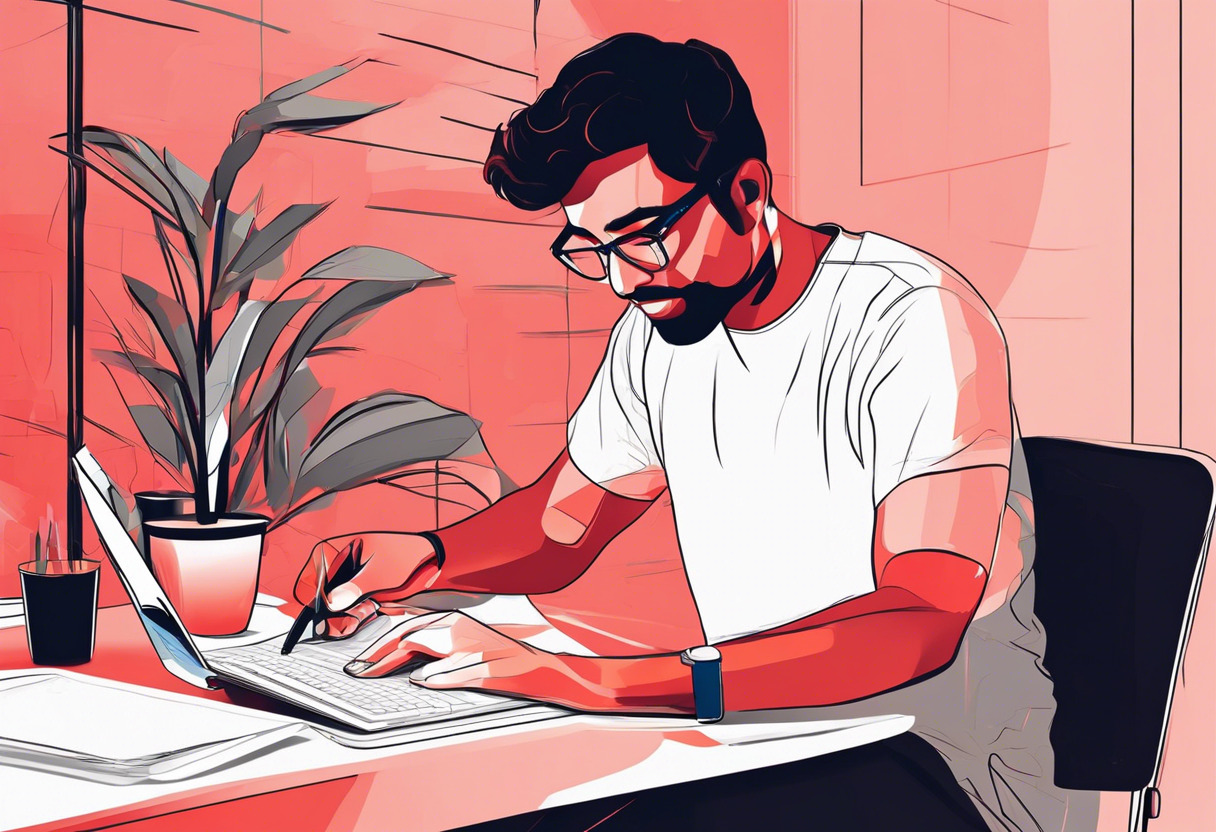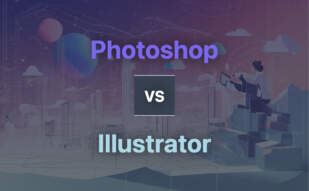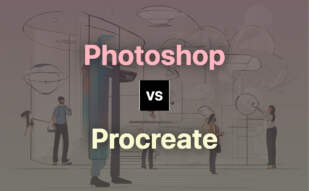For professional-grade image editing, Photoshop stands superior with comprehensive features and compatibility. However, for users seeking cost-effective flexibility, GIMP, with its open-source nature, offers a viable alternative, albeit with a steeper learning curve.

Key Differences Between Photoshop and GIMP
- Ownership: Photoshop is a proprietary software developed by Adobe with paid subscription models, whereas GIMP is an open-source software, free to use.
- Interface: Photoshop’s interface is user-friendly and intuitive, while GIMP is considered complicated for beginners but highly customizable.
- File Compatibility: Photoshop adopts its unique PSD and PSB formats, GIMP has only partial compatibility with Adobe file formats.
- Supported Platforms: Photoshop focuses on Macintosh and Windows platforms, GIMP extends support to Linux, FreeBSD, OpenBSD, Solaris, and AmigaOS 4.
- Upgrades and Support: Regular updates and professional support are available with Photoshop, while GIMP relies on a volunteers’ community for updates.
- Tools: Photoshop offers advanced tools like object selection tool, properties panel, transform warp. GIMP features customizable tools such as channel mixer and crop tool.
| Comparison | Photoshop | GIMP |
|---|---|---|
| Initial Release | 1988 | 1995 |
| Main Use | Image Editing, Graphic Design | Image Editing, Artworks, Paintings |
| Type of Software | Paid | Open-Source |
| Compatibility | Windows, macOS | Linux, macOS, Windows, FreeBSD, OpenBSD, Solaris, AmigaOS 4 |
| Tools | Layers, Adjustment Layers, History Panel, Regular Healing Brush, Clone Stamp Tool, Crop Tool, Color Balance, Levels, Curves, Blending Modes. | Channel mixer, Crop tool, Paint brush, Pencil, Airbrush, Eraser, Ink tools, Bucket Fill tool, Smart tools like Clone tool, Healing brush, Perspective clone tool, Smudge tool, Blur and sharpen tools, Selection tools |
| Image File Format Support | JPEG, PNG, GIF, TIFF | Multiple formats, Partial compatibility with Adobe file formats |
| Latest Version | Photoshop 2022 (version 23.3.1) | Regular updates provided |
| Main Users | Graphic Designers, Web Developers, Photographers, Illustrators | Illustrators, Graphic Designers, Photographers |
| Project Suitability | Graphics and layouts for print projects, Website designs, Logos, Digital art | Ad creation, Flyer design, Painting |
What Is Photoshop and Who’s It For?
Integral to the professional digital art realm, Photoshop is a feature-rich photo editing software developed by Adobe. Its name has become synonymous with image manipulation. Photoshop facilitates creation and editing of raster images in multiple layers and supports a wide color spectrum. Replete with tools like Layer-based editing, Adjustment Layers, History Panel, Color Balance, Brush variety, Clone Stamp among others, Photoshop is not just a software but an artistic easel. Beyond just editing, Photoshop possesses capabilities to render text, vector graphics, 3D graphics, and videos.
Primarily used by Graphic Designers, Web Developers, Photographers, and Illustrators, it supports a wide array of projects from print layouts to digital art. It operates on macOS and Windows platforms and supports varied file formats including JPEG, PNG, GIF, and TIFF.

Pros of Photoshop
- Advanced, layer-based editing system
- Supports variety of file formats
- Features for text, vector and 3D graphics rendering
- Part of Adobe Creative Cloud
Cons of Photoshop
- Premium software, hence expensive
- Steep learning curve for beginners
- Resource-intensive, requiring high-spec hardware
- Subscription based payment model
What Is GIMP and Who’s It For?
GIMP (GNU Image Manipulation Program) is an open-source platform that offers robust image-editing capabilities. Developed by Spencer Kimball and Peter Mattis in 1995, GIMP caters to illustrators, graphic designers, and photographers. It facilitates artwork creation, photo editing and offers tools for digital retouching. GIMP supports multiple file formats and data export.
It’s a cost-effective solution for individuals and businesses seeking comprehensive image editing functionalities without subscription charges. GIMP supports 82 languages and runs on diverse operating systems including Linux, macOS, and Windows. However, while powerful, it is often viewed as a complex tool for beginners with a cluttered interface.

Pros of GIMP
- Open-source, hence cost-free
- Customizable user interface
- Compatible with various OS
- No subscription charges
Cons of GIMP
- Complex interface for beginners
- Only partial compatibility with Adobe file formats
- Slow updates and bug fixes
- Latest versions lack some popular features like Lanczos image scaling
Photoshop vs GIMP: The Final Clash
After a rigorous, feature-by-feature exploration of Photoshop and GIMP, it’s time to unravel the final verdict. Buckle up!
1. Professional Graphic Designers
Professionals who crave advanced features and require a universally-accepted, industry-standard tool cannot go wrong with Photoshop. With an exhaustive list of features like Layers, Adjustment Layers, and the Clone Stamp Tool, along with a myriad of brushes, graphic designers can create unrivaled artwork. The software’s integration with Adobe Creative Cloud ensures seamless workflow across platforms.

2. Freelancers and Start-ups
For those on a budget, GIMP is the savior. It’s not just open-source but also extends solid features like photo enhancement and digital retouching. Although the interface might seem a bit cluttered initially, the functionality offered at zero cost makes it a must-have for freelancers and start-ups.

3. Avid Illustrators
While both software cater to illustrators, Photoshop with its superior brushes and layer-based editing feels more premium. Its ubiquitous presence also means better community support and resources.

4. Web Developers and Photographers
Photoshop again takes the lead for web developers and photographers because of its better integration with additional tools like Adobe Lightroom and Bridge. However, GIMP’s channel mixer to eliminate distortions and a robust crop tool shouldn’t be undermined.

5. Novice Graphic Designers and Students
When it comes to beginners, GIMP triumphs thanks to its free accessibility and the strong educational groundwork to learn fundamentals. Its lower learning curve compared to Photoshop also makes it an ideal choice for novices.

Summing up the Photoshop vs GIMP battle: For professionals seeking advanced features and industry recognition, Photoshop is unbeatable. Yet, for budget-conscious freelancers, start-ups, and learners, GIMP’s robust features and cost-effectiveness make it a solid pick.
Hannah Stewart
Content writer @ Aircada, tech enthusiast, metaverse explorer, and coffee addict. Weaving stories in digital realms.





